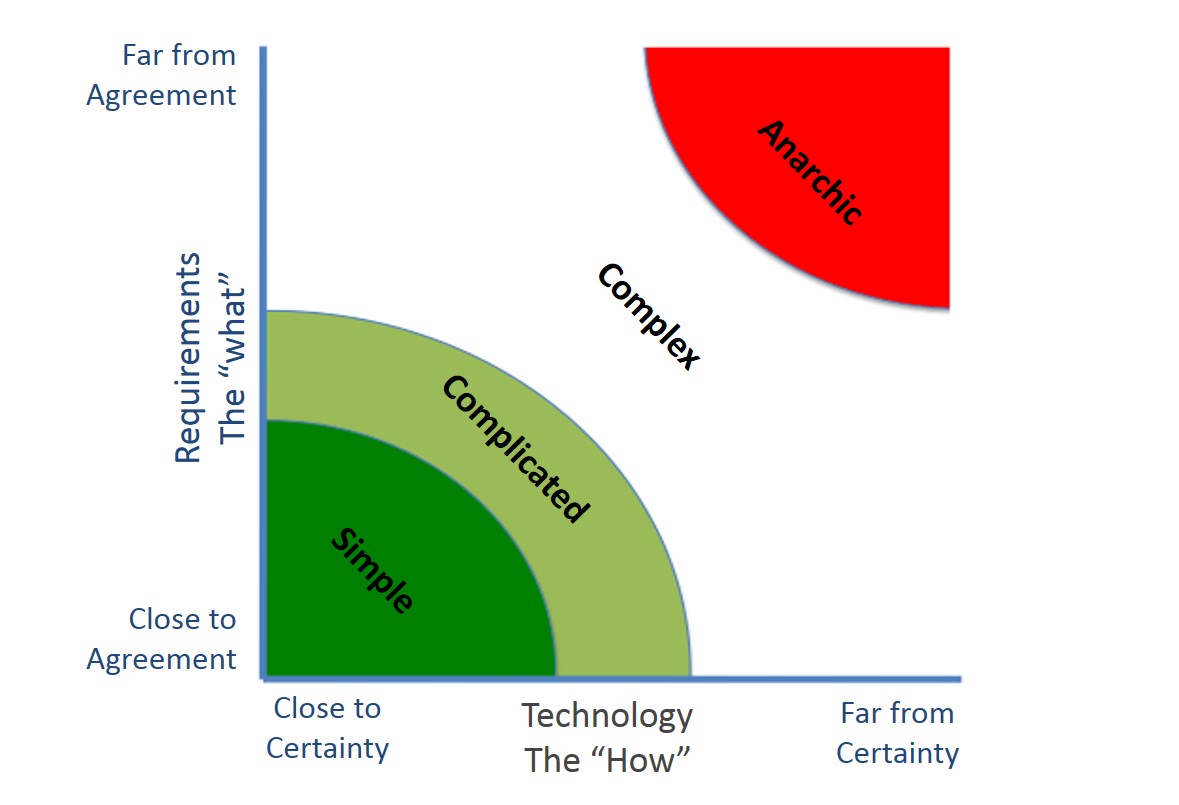Dispelling common agile misconceptions
Agile is surrounded by many myths and misconceptions, in many cases resulting from the impression that agile is a simple concept. We are constantly told what agile is, what it can (or can’t) do, when it can be used, and who can use it.
Barbara Roberts, director for professional development at the Agile Business Consortium, addressed this issue at the APM National Women in Project Management Conference, drawing on her long experience of running agile transformations in large complex corporate organisations to dispel many of these misconceptions.
Barbara has been working in agile from the beginning and has led many successful agile transformations in a variety of sectors. This has meant addressing many of the issues typical of any organisational change, and providing coaching and mentoring at all levels within the organisation.
Here are 10 common misconceptions Barbara wants you to forget right now:
-
Agile is a silver bullet, the answer to all your woes
Agile cannot solve the impossible, however it can reduce wasted time: it focuses on the right things and if it’s going to fail it will fail fast. It shortens the lines of communication and encourages collaboration.
-
Agile is ‘quick and dirty’
In the early days of agile solutions were short-term. The agile approach now encompasses ‘rapid’ with ‘control and quality’, demanding a high-level of professionalism. It may however deliver sooner by focusing on important things, ensuring delivery of the right solution at the right time.
-
Agile only applies to IT
This may be true for some agile approaches, E.g. Scrum, eXtreme Programming etc, however the logic of agile applies to all types of projects and to life in general. Choose the appropriate approach for what you’re trying to do, which may mean adopting ‘blended agile’.
-
Agile is only for small simple projects
Complex projects need “corporate strength” agile which has, for example, delivered: Ministry of Defence military aircraft project which was a complex contractual collaboration between three defence suppliers; A major offshore oil project; A project to streamline shop-floor manufacturing processes building aircraft engines.
-
Agile means you don’t need documentation
The agile manifesto states working solutions over comprehensive documentation, however it does NOT mean ‘no documentation’. The primary value of documentation is to support the solution.
Agile teams bring together a breadth of roles, which means collaboration and conversation replaces much of the up-front documentation/ paperwork required by traditional silo’ed teams.
-
Agile is always the answer

It’s about choosing the right approach for each project. Choose where you fit on the spectrum between traditional and agile:
-
Agile means you can change anything and everything
Agile is all about change but it’s about change within reason. Foundations are agreed and baselined from the start, defining the breadth (priorities) and scope which are protected and managed by more formal change management controls, though flexibility may be required.
Evolutionary development fills in the depth, which is where informal change can happen through conversation or when something becomes redundant.
-
You don’t need project managers in agile
Many agile approaches don’t do projects, eg. Scrum which has no defined beginning, middle and end. Most corporate organisations deliver projects which need managing in order to succeed. These need project managers who adopt a facilitative management style, rather than command and control.
-
Either you’re agile or you’re not

Agile is part of a spectrum - all projects can use some agile practices. “You can use all of AgilePM some of the time. You can use some of AgilePM all of the time.”
-
Governance is ‘anti-agile’
Agile does not negate the need for good governance. Governance is supportive rather than policing. You will however need to accept what is non-negotiable. Agile has been effectively used to deliver in regulated organisations where strong governance is non-negotiable. Such as:
- Pharmaceutical
- Financial
- Military
- Manufacturing
Businesses need to be agile to survive and thrive – agile is for everyone, it just needs to be applied with a big dash of common sense.

5 comments
Log in to post a comment, or create an account if you don't have one already.
Quite right these are common misconceptions. Although the most common is that Agile project management and Agile development, e.g. Scrum, are one and the same. They are NOT. This misconception has done unmeasureable damage to those organisations who have made this gross error. Now all we need to do is say what Agile project management.........is. And oh yes, at one level the answer is simple, Agile project management is......project management, but with Agile principles applied. What does Agile PM REALLY look like? Ask pretty much any great PM professional. Such folk are Agile to their bones probably without realising it. Its about doing JUST ENOUGH project management. Adrian co-author APM Directing Agile Change and Agile Assurance guides.
Really nice article. I'm saving it as it hits all the key points we need to watch out for. Thanks Ashok Singha
Thank you! This is really helpful.
Admittedly I had a very limited exposure to the subject and this myth busting article has been very useful, specifically about where Agile can be implemented.
Ágil significa que no necesita documentación El manifiesto ágil establece soluciones de trabajo sobre documentación completa, sin embargo, NO significa 'sin documentación'. El valor principal de la documentación es respaldar la solución. Los equipos ágiles reúnen una amplia gama de roles, lo que significa que la colaboración y la conversación reemplazan gran parte de la documentación y el papeleo iniciales que requieren los equipos tradicionales en silos. Pregunto: Cómo entender los Cuatro (4) Valores del Manifiesto Agil entonces. Gracias Bernardo Garcia Ing. Consultor Project Management (Venezuela)